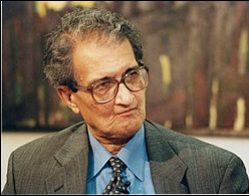 Professor Satya Narayan Misra in Bhubaneswar, April 9, 2024: One of the paradoxes of India’s growth story after economic liberalization has been jobless growth. At its peak during 2004-2009 when average GDP growth rate was 8.7%, the growth in employment was 1% only. The recently released India Unemployment Report published jointly by ILO and IHD has confirmed that this trend of jobless growth has continued from 2000-2023, despite Mr Modi’s promise in 2014 that 10 million additional jobs would be created every year.
Professor Satya Narayan Misra in Bhubaneswar, April 9, 2024: One of the paradoxes of India’s growth story after economic liberalization has been jobless growth. At its peak during 2004-2009 when average GDP growth rate was 8.7%, the growth in employment was 1% only. The recently released India Unemployment Report published jointly by ILO and IHD has confirmed that this trend of jobless growth has continued from 2000-2023, despite Mr Modi’s promise in 2014 that 10 million additional jobs would be created every year.
The Report, apart from addressing the disconcerting trend in employment, has also covered the educational and skill challenges and has suggested five missions that would need to be taken up in right earnest to address the most acute problem of unemployment that confronts the youth in India today.
Data on unemployment is a vexatious issue in India. This is understandable as close to 90% of the working population work in the informal sector, data of which is not captured by NSSO. CMIE, a private sector think tank, has also been coming up with unemployment data more frequently. When NSSO came up with data that the overall unemployment is 6.11% (7.8% in urban areas and 5.3% in rural areas) it was not allowed to publish the details. These figures were the highest since 72-73. When CMIE came up with data that unemployment was 6.6% in 2018, he was a vilified as a Chidambaram acolyte. In this oppressive and suppressive environment the India Employment Report carries a lot of heft and credibility.
It has brought out that the LFPR (Labour Force Participation Rate) has been plummeting from 61.6% in 2000 to 55.9% in 2012 to 50.2% in 2019 at the height of pandemic. It has recovered to 55.2% by 2023, largely due to higher labour engagement in the agricultural sector. It also brings out how female labour force participation rate which had plummeted from 38.9% in 2000 to 24.5% in 2019 has now gone up to 32.8%. The female labour force participation rate is still much lower than male force participation rate of 77.2%.
The report brings out the data on underemployed %, which stands at 7.1%. Ragnar Nurkse was the first to comment on this widely prevalent phenomenon of disguised employment, where too many too people are engaged, as in agricultural avocation, for want of employment opportunity in nonfarm sector. The Report also brings out the sectoral trends of GVA (gross Value addition) and employment generation. For instance, it brings out how the GVA in manufacturing sector has gone up by 7.5% during 2000-2019, while additional employment generation has been only 1.7%. In fact, manufacturing which contributes 16% to the GDP accounts for only 12-14% of total employment.
 In contrast countries with global manufacturing hubs like China, South Korea account for nearly 35% of GDP, with around 33% of the labour force engaged. The NMZ Policy (2011) had accordingly set a target of increasing the share of manufacturing in GDP from 16% to 25% in a decade’s time, concomitantly generating 10 million additional jobs a year. This pragmatic vision has neither been realized during Manmohan’s decade long rule or Modi’s decade long tenure. Similarly, the Services sector, which accounts for 57% of the GDP, witnessed a growth of 7.5% during 2000-2019 with additional employment generation of only 2.9%.
In contrast countries with global manufacturing hubs like China, South Korea account for nearly 35% of GDP, with around 33% of the labour force engaged. The NMZ Policy (2011) had accordingly set a target of increasing the share of manufacturing in GDP from 16% to 25% in a decade’s time, concomitantly generating 10 million additional jobs a year. This pragmatic vision has neither been realized during Manmohan’s decade long rule or Modi’s decade long tenure. Similarly, the Services sector, which accounts for 57% of the GDP, witnessed a growth of 7.5% during 2000-2019 with additional employment generation of only 2.9%.
Beyond these disturbing numbers, the Report brings out how 66% of the increase in employment after 2019 is due to increase in self employment, with the share of regular work declining. The quality of employment in informal sector which accounts for 90% of employment is of poor quality. Wages and earnings are either stagnant or declining in these sectors. The average monthly earning of self employed is around Rs 11973in 2022 as per the Report, while it is around Rs 19010 for regular workers and a measly Rs 8267 for casual workers, who constitute 30% of the workforce.
The wage disparity between male and female worker is around 40% for casual labourers, in clear violation of the Constitutional mandate of equal work for equal pay for both men and women at Article 39(d) of our Constitution. Besides, 40% of regular workers and 52%of the casual workers did not receive daily minimum wage the wages of Rs 480 per day as per the report. Besides the production process is increasingly becoming capital intensive and labour saving.
The Report clearly spells out the trends in education and profile of youth employment and brings up interesting evidence. It brings out how compared to 2000 when the illiteracy % was 29.55, 22.9% in higher secondary and 5% were graduates, the illiterate % has gone down to5.4% in 2022 and those with higher secondary education and graduates has gone up to 43.6% and 14.7% respectively. While this is a welcome trend, it’s not matched by appropriate skill inculcation and vocational training. As per SKILL INDIA Report only 7% of the graduates are properly employable.
The Report brings out how creation of training capacity in poor regions is particularly low and there is a very low level of socioeconomic inclusion. Apprentice training is low. Out of 1.2 lakh estimated, only 25000 offered apprenticeship. For entrepreneurship development, the report rightly flags the importance of access to funding, supporting regulatory and tax regime, education system that support entrepreneurial mindset and coordination between public, private and volunteer sector.
The Report rightly suggests that production and growth should me more employment intensive, so that we create at least 7-9 million jobs per year.
 This was also suggested by Prof Amartya Sen in his seminal book Choice of Techniques (1960) where he advocated labour intensive technology as the right choice over capital intensive technology promoted by the West. The report recommends five missions viz production to be more labour intensive, improve quality of jobs, overcome labour market inequality, provide effective skills, and create productive nonfarm employment and supporting the SMEs.
This was also suggested by Prof Amartya Sen in his seminal book Choice of Techniques (1960) where he advocated labour intensive technology as the right choice over capital intensive technology promoted by the West. The report recommends five missions viz production to be more labour intensive, improve quality of jobs, overcome labour market inequality, provide effective skills, and create productive nonfarm employment and supporting the SMEs.
Quite clearly, transcending all political hype and obfuscation, the unemployment rate is increasing. While the total work force employed has increased from 382.3 million in 2001 to 487.4million in 2021, the working age population (15-64) has increase from 656 million to 950 million (2001-2021). The unemployment per year has been increasing from .39% to .44%.
This is further roiled by high incidence of disguised employment. Prof Nagraj (2023) brings out how the index of industrial production has gone down from 5.7% during (2005-2013) to 3.1% during 2024-2023. The Gross Capital Formation which was 34.3% during Manmohan regime in 2011-12 has gone down to 28.9% in 2021-22, with the dip predominantly due to private sector investment, while public sector investment has remained constant at 8%.
Despite all the hype regarding surge in FDI, the net FDI/GDP has gone down from 3.6% (2008) to 2.4% (2022). With per capita income lowest among G20 countries and consumption levels low for almost 70 % of Indians, without proper skill based education and labour intensive manufacturing, the spectre of unemployment in India would remain a troubling terrain.


Leave a Reply
Be the First to Comment!